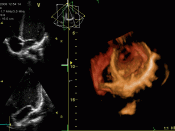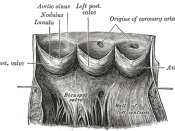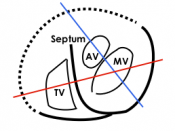Diagnosis: The patient seems to be suffering from aortic stenosis (AS). AS is the narrowing or obstruction of the heart's aortic valve, which prevents it from opening properly and blocks the proper flow of blood to the aorta.
Justification for diagnosis: Some ways in which the heart may not function properly are that it reduces the ability of valves to work properly and obstructs the flow of blood out of the heart. Some symptoms include fainting, light-headedness, and dizziness, especially during or after exercise, shortness of breath, fatigue and chest pain. The patient indicated he had been suffering from fatigue and chest pain which are included in the symptoms listed, along with the patient losing consciousness during exertion, which is also included, along with a heart murmur discovered during a routine physical. In AS, breathlessness, fainting, and weakness occur because blood isn't being circulated properly from the lungs to the rest of the body.
The heart murmur is cause because the AV valve isn't able to perform correctly. Chest pain is caused because the heart is pumping but little blood flow is working due to the calcification around the AV valve.
Prognosis: Some people are actually born with AS (congenital), but it is also possible for AS to develop later in life (acquired), so depending on how long someone has had AS, their prognosis may vary.
Treatment: The first treatment would be to administer antibiotics to prevent endocarditis (an infection) and ones to help with heart rhythm disturbances. Calcium channel blocking agents may also be used. Calcium channel blocking agents affect the movement of calcium into the cells of the heart and blood vessels. As a result, they relax blood vessels and increase the supply of blood and oxygen to the heart while reducing its workload. Some of the...


